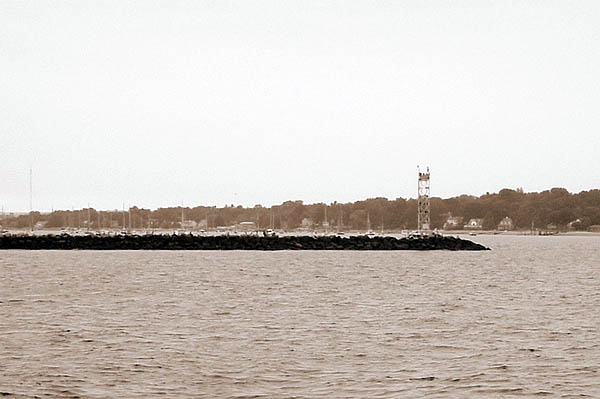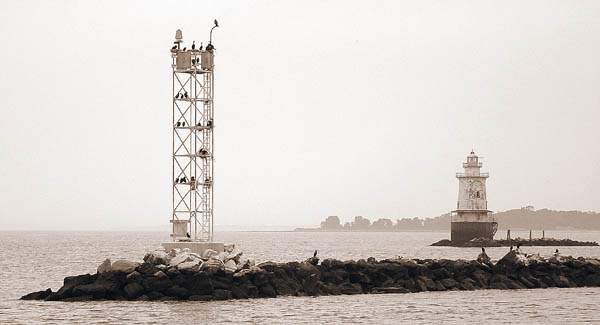How Did The Breakwater Irregulars Get That Name?
A Piece Of Our History by Bernie Weiss, Commodore 1988-1993
It’s a silly question, and some would also say it’s a silly name for a yacht club. Yet it is a Frequently Asked Question. And yes, there is rhyme and reason within the answer:
In 1967, Dick Sockol invited about a dozen Stamford boating friends to join him in forming a new yacht club, a club dedicated to family racing, “cruiser style”. Dick had already established himself as a MORC champion in Western Long Island Sound. He had won virtually every trophy offered by clubs in our region. Now, he was looking for a new challenge.
Dick’s new club would welcome anyone with a sailboat, any size, any model, so long as it could reasonably be called a family cruising yacht. There would be no “racing machines,” no clubhouse, and no physical assets. Dues were nominal, and there would be no officers other than Dick as Founding Commodore.
Thus, there were no “issues” and no club politics – – Dick created racing policy, club policy, and membership policy on the fly; he made all decisions himself, consulting no one. Informal and casual, low-cost and competitive, this minimalist club existed only on paper: It was a true “virtual” yacht club, or “paper club,” with all the papers in one file folder in Dick’s trucking company office. All club meetings were on the water – – Tuesdays at sunset, all summer long – – to race. And afterwards, to eat pizza and drink beer while bickering over the results.
The friends attracted by Dick’s invitation owned a variety of yachts:
- Some light-weight designs (Cal 20), some heavy coastal cruisers (Bounty 41)
- Mostly sloops (e.g., Columbia 24), but a few ketches (Pearson 35)
- Some boats had fin keels (Morgan 27), others had full keels with attached rudders (Greenwich 24)
- Some boats were constructed of heavy oak and other woods (Alden 38), and some were molded of the new lightweight plastic (Santana 25)
- Some boats were race-equipped (spinnakers, adjustable backstays, etc.), but most were not
Get the idea? It was truly a rag-tag “irregular” bunch with both racer-cruisers and cruiser-racers, observed Dick, and so that word “Irregular” stuck as part of the club’s name.
All boats raced against each other in a single division. To score the competition fairly and to accommodate the irregular nature of the fleet, Dick devised a handicap rating system based on yacht design, potential boat speed, and the skipper’s racing experience or lack of same. To further equalize the competition, several times each season Dick evaluated and adjusted the handicaps based on a skipper’s performance and actual race results.
Dick’s rating system was loosely based on a method developed at the Seattle Yacht Club in 1966 for the Pacific Handicap Racing Fleet. In retrospect, Sockol’s approach was an early evolutionary step in the development of the rating system we know today as PHRF (Performance Handicap Racing Fleet).
As for the “Breakwater” part of the name…
In 1967 all of the participating boats were berthed in Stamford Harbor, most at Marina America (at the site of what is now [when this was written] Brewer Yacht Haven West) and the Stamford Yacht Club. Conveniently located at the Harbor entrance was a permanent starting line and finishing line: A pair of protective granite walls bracketing the 300-foot wide dredged deep-water channel.
Also, just outside the pair of breakwaters, there were multiple government buoys to the southeast, south, and southwest. Sockol designated the two ends of the two breakwaters spanning the channel as the two ends of the start and finish lines. The four government buoys “32,” “34,” “32A,” and “15” were the most frequently used race marks for the course. The fact that the government marks were rarely dead to weather or DDW was not an issue.
So the Breakwater Irregulars had a name and a program, thanks to Dick Sockol’s initiative and creativity. Of course, as racing commenced, it quickly became apparent that the considerable recreational and commercial marine traffic at the Stamford Harbor entrance represented a hazard and a nuisance to the racing fleet. (I’m certain the other non-racing skippers felt the same way about us!)
The breakwaters themselves, comprised of 2-ton granite blocks, were hazardous, not only as yachts maneuvered around their ends prior to the start of a race, but especially after sunset as yachts approached the breakwater finish line in the dark. So the starting and finishing lines were soon moved to Gong “1″ just outside the Harbor, and later to “32″ about a mile southeast of the Harbor.
Initially, Monday telephone calls from Dick inquired as to which night that week was best for everyone to race. Some weeks, especially if Dick or several of the skippers were out of town, there was no racing. But eventually, Tuesday night became Race Night for everyone. The rag-tag fleet thrived and grew, and by 1971 there were 22 “Breakwater Irregulars.”
Today, half-a-century later, the Breakwater Irregulars continues to offer friendly but competitive yacht racing with a lot of local flavor. We are still a low-key and casual “virtual” yacht club, but we are now official members of the Yacht Racing Association of Long Island Sound, our yachts (24 to 45 footers) race in five PHRF divisions every Tuesday at sunset all summer long, and we invite you to join us for the fun. Our dues are modest, the competition can be intense but always friendly, and the friendship and camaraderie are ever-lasting. After every race, most of our skippers and crew convene at one of the several local watering holes for post-race camaraderie and sea stories.
Stamford Harbor Breakwaters
Two breakwaters – – the original start / finish lines for the Breakwater Irregulars fleet – – were created by O’Brien Brothers Construction Company of New York over a 13-month period in 1940-41. The breakwater east of Stamford’s primary deepwater channel was constructed to a length of 1,200 feet, and the breakwater west of the channel to a length of 2,900 feet.
Granite blocks of irregular shape, some weighing up to two tons, were used. Under the granite blocks, as a footing for the visible part of the breakwaters, trap rock was placed. Under the trap rock, sand and gravel was placed. Total cost of the project was $516,000. The gap (harbor entrance and entry to the Federal channel) between the two proximal ends of the two breakwaters is approximately 300 feet, depending on the points of measurement and the state of the tide. This gap served as the original start/finish line for the Breakwater Irregulars racing fleet in 1967.

